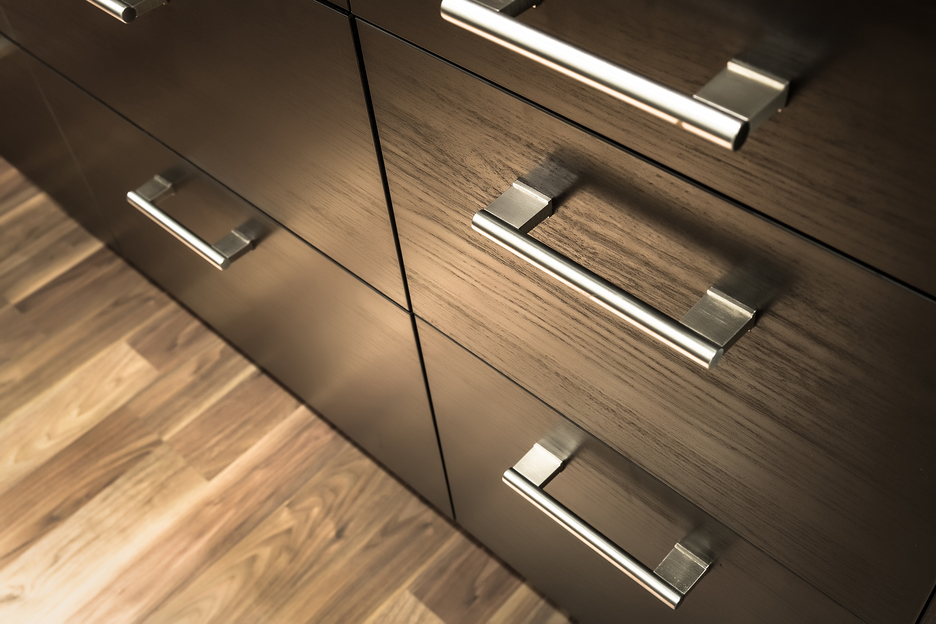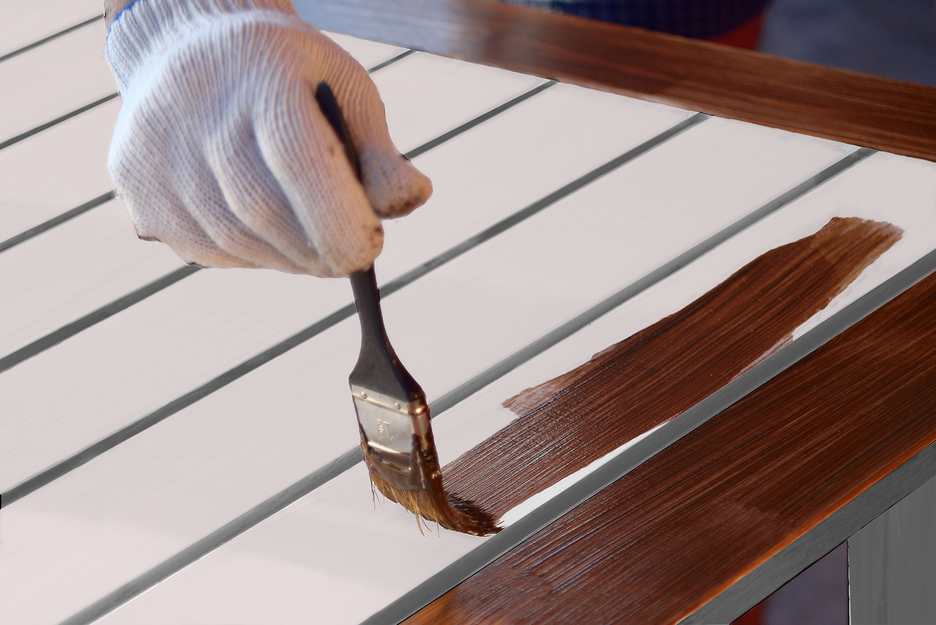Wood-effectpaint: which is the best one?
HTM Wood Enamel isa high-performance, very hard and resistant polyurethane lacquer enamel.
This type ofwood-effect paint can be applied both indoors and outdoors on steel, metal,solid and veneered wood, etc.
The composition of this paint and the brush youuse allows you to achieve a wood grain effect with a natural, weather-resistantlook.

The available colours forthis product are oak, ember, walnut, iroko, mahogany, sapele and wenge.
How to apply wood-effect paint
Follow the stepsbelow to obtain an optimal wood effect with the enamel mentionedabove:
1. As always, before starting to apply any product, the surface mustbe completely cleaned,degreased and sanded with a suitable tool (unless it is aporous material). Where necessary, a solvent can be used to remove any dirt.
2. If it is a chest of drawers, a door or any substrate with multipleparts, it is a good idea to dismantleall objects that may cross the brush’s path.
3. Before applying the wood-effect paint, you should always use the primer that corresponds to thesurface you are going to paint. On difficult surfaces,first check that the primer has adhered well.
4. If you use a flatbrush, it should be about 7 centimetres wide, so you can spreadthe paint easier. You can also use a round brush or a roller, depending on thetype of surface you're using it on.
5. Next, mix thewood-effect paint to make sure it's perfectly uniform throughout.
6. Spread an initialcoat of paint so that the grain runs along the longestedge.

7. To achieve a better wood appearance you need to use long strokes,making the grains continuous.
8. Let it dry for about 24 hours and then apply a second coatof wood-effect paint, but a little lighter this time.
9. You can use differentpaint colours to achieve a more authentic wood grain.
10. If you want to change the natural finish of the grains, wait 10minutes first, but no longer than 20.
11. You can drawgrains by creating knots with the flat brush, orexaggerate them using a trimmed brush. Mark the strokes by waving the brush andcreating parallel grains. When doing so, avoid adding more paint than alreadyapplied.
Visit our blog and keep up to date with all the news inpainting and decoration.


